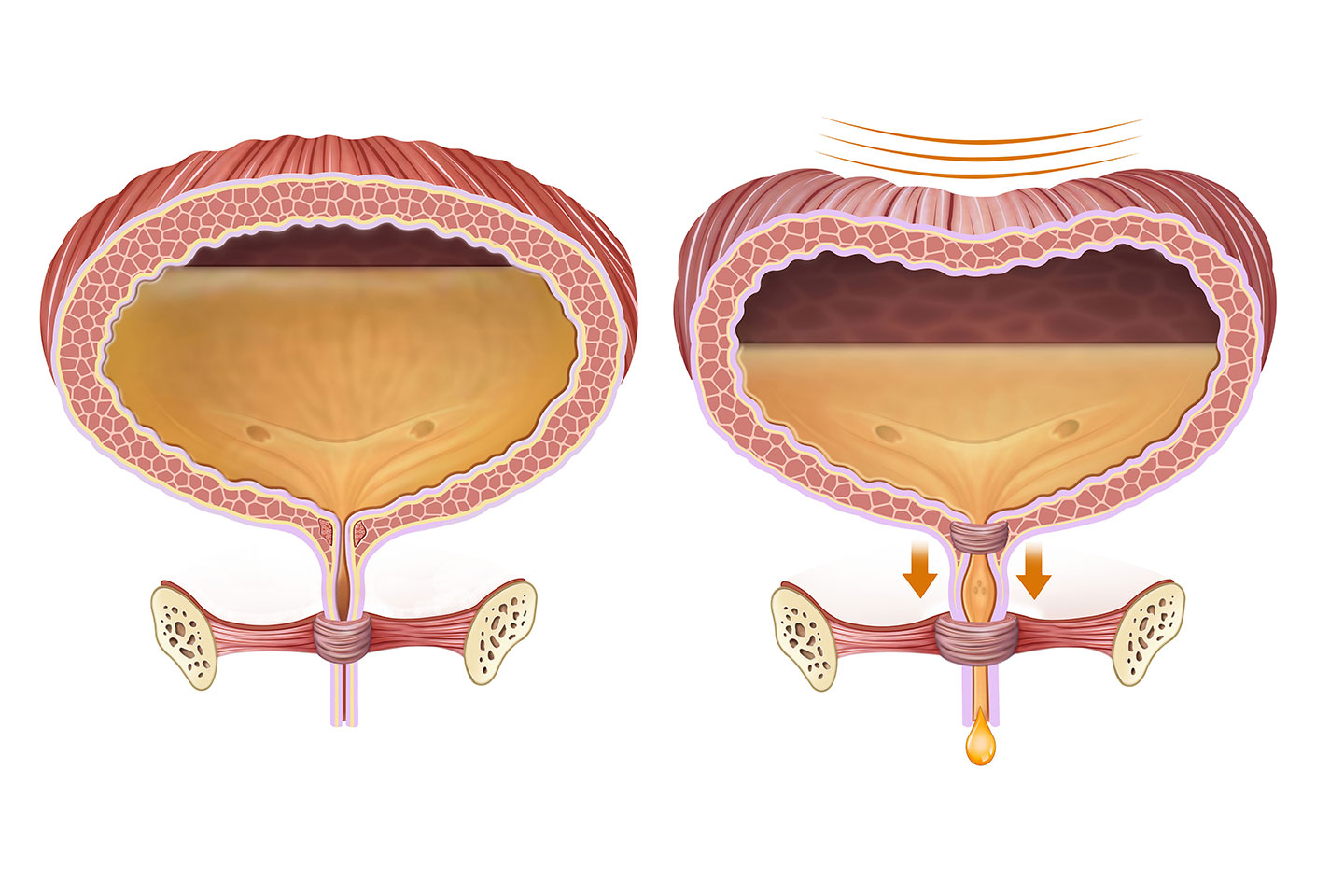Male Voiding Dysfunction
What Is Male Voiding Dysfunction?
The lower urinary tract in the male includes the bladder, prostate and urethra, which allows for storage and timely expulsion of urine. Voiding dysfunction describes a condition in which there is dysregulation of the natural systems which regulate voiding and may involve the bladder muscle, the prostate and the urethra. Voiding symptoms represent a continuum of what is referred to as Lower Urinary Tract Symptoms (LUTS).
LUTS can occur predominantly during bladder filling (storage), emptying (voiding), post urination or in a considerable overlapping pattern. Storage symptoms often can be described as irritative, and include urgency, frequency, nocturia (nighttime urination), incontinence (involuntary loss of urine). Voiding symptoms relate to the flow of urine and include urinary hesitancy, difficulty in emptying bladder or straining, weak stream or urinary dribbling.

In men, there are many potential etiologies of voiding dysfunction. Common causes of obstructive symptoms include an enlarged prostate due to benign prostatic hyperplasia (BPH) or prostatitis. Less common causes are urethral stricture (scar tissue), bladder stones or bladder tumors (benign or cancer). Pelvic floor hyperactivity is also found in men. Irritative symptoms can result from similar etiologies, but also from other causes including bladder infection, bladder stone or tumor. Symptoms can occur if there is neuro-sensory dysregulation within the bladder, which can be reflected as sensory instability, inappropriate bladder contractions, bladder hyperreflexia or poor bladder compliance. Neuro-sensory dysregulation may be the result of bladder structural or physiologic changes due to chronic, untreated BPH.

Female Voiding Dysfunction
What Is Female Voiding Dysfunction?
The lower urinary tract, which includes the bladder and urethra, allows for storage and timely expulsion of urine. Voiding dysfunction is a broad term, used to describe conditions where there is poor coordination between the bladder muscle and the urethra. This results in incomplete relaxation or overactivity of the pelvic floor muscles during voiding. A variety of specific definitions exist; the International Continence Society and International Urogynaecological Association define female voiding dysfunction as “abnormally slow and/or incomplete micturition (voiding) based on symptoms and urodynamic investigations.”
Voiding dysfunction can manifest as a wide range of symptoms which can include difficulty in emptying the bladder, urinary hesitancy, slow or weak urine stream, urinary urgency, urinary frequency or dribbling of urine.
Voiding dysfunction can be due to nerve dysfunction, non-relaxing pelvic floor muscles or both. Voiding dysfunction is also classified as being caused by either under activity of the bladder (detrusor) or outflow (urethra). Evaluation by a clinician may include tests, such as uroflowmetry, post-void residual and pressure flow studies. Treatment is individualized, depending on specific etiology. Possible treatments include pelvic floor therapy, intermittent self-catheterization, muscle relaxants or placement of a neuromodulation device. Specific conditions that fall within the spectrum of female voiding dysfunction include Urinary Incontinence and Interstitial Cystitis.
TREATMENTS & CONDITIONS
Bladder Cancer
Bladder cancer is a type of cancer that begins in the lining of the urinary bladder. The bladder is a hollow muscular organ in the pelvis that stores urine before evacuation.

Surgery for Bladder Cancer
This surgical procedure is used in both the diagnosis and treatment of bladder cancer. And TURBT allows Dr. Feifer to remove an entire tumor from the inside of your bladder.

Surgeries & Therapies for BPH
BPH or enlarged prostate can lead to significant urinary distress in men. Dr. Feifer specializes in the medical and surgical management of ...

Urinary Obstruction
Ureteropelvic junction (UPJ) obstruction occurs in the upper urinary. Most often, it is blocked at the renal pelvis. This is where the kidney attaches to one of the ureters


